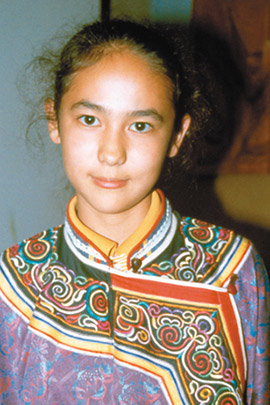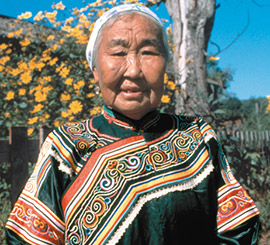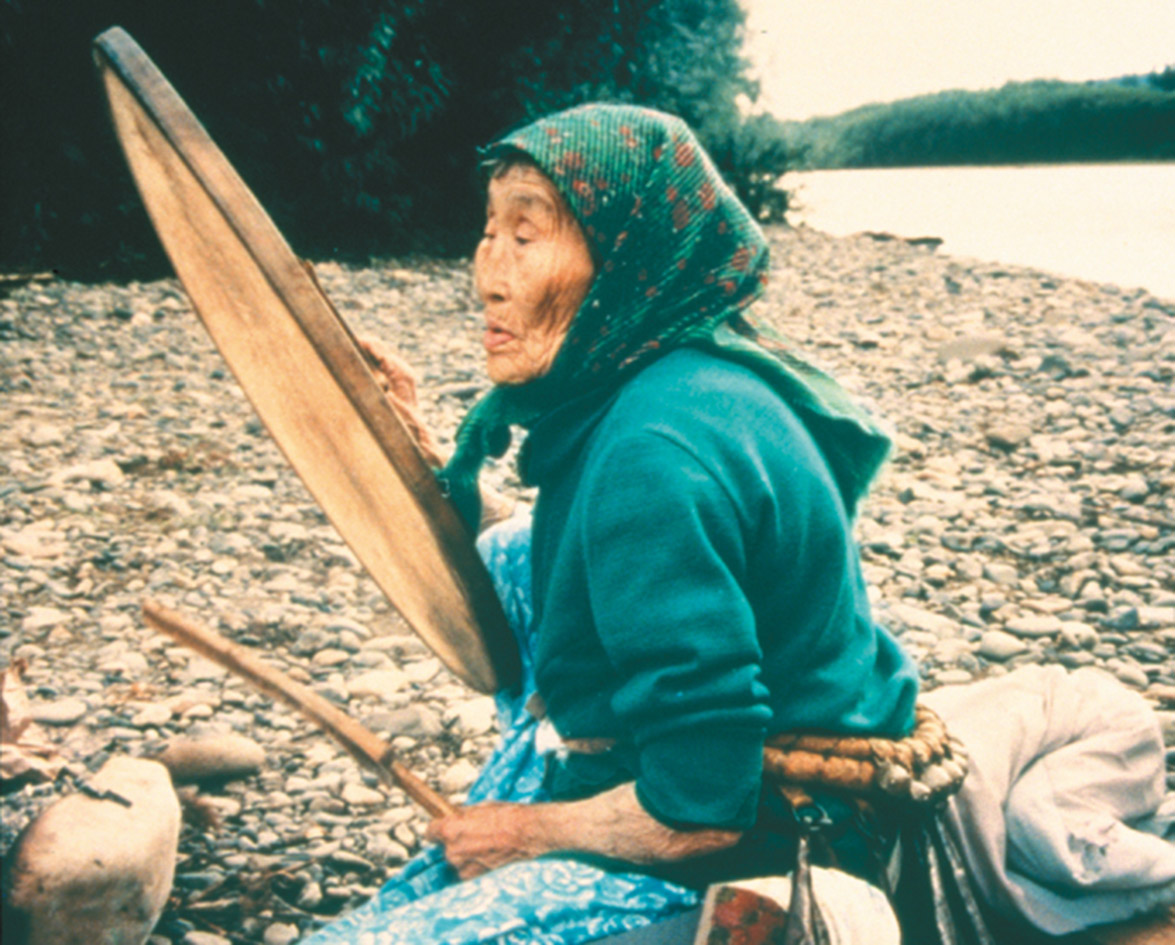“Long ago my tiger husband came along the road. He crossed three mountains to come here, and then washed himself three times in deep water until he was shining. When I was little the tiger slept with me. He was like a big fur coat! I didn’t tell mama. I had two tiger babies—they are still alive now and help me fly to other worlds.”
This is a tale from the native storytellers of the remote Amur River region of eastern Russia. Between 1993 and 1999, ethnologist Kira Van Deusen collected many such stories from the Nanai, Udeghe, Ulchi, and Nivkh people of the region. She compiled the best of them in her recently published book, The Flying Tiger: Women Shamans and Story-tellers of the Amur. Unlike books of folktales, her book interweaves intimate accounts of the history of the region and the social context of its people with descriptions of the author’s experiences.

In many of the villages she visited, the residents had no running water, and they warmed themselves with wood fires. Electricity came from an archaic diesel plant. Van Deusen says, “They had to turn off the power in their houses during the day so that the school could have power.” The few technologies available are a result of Soviet influence in the area during the past century. The native culture has suffered for these simple luxuries.
Those in power opposed spirituality of any kind. As a result, the shamans were taken to the Soviet gulags, where many died. Van Deusen says the shamans were unique, showy characters. She quotes one of the villagers: “We wouldn’t go to the movies, we’d go to shamans.” In the ceremonies of the shamans, they often use a drum, which they liken to a horse for its transporting qualities. Van Deusen says, “People would gather around and the shaman would describe what she was seeing.”

The powers of the shamans do not come easily. Van Deusen describes shaman initiations, often in early youth, as “sickness visions,” in which the shamans must come to terms with the animosities of a host of spirits. She tells the story of one woman: “In the middle of winter, she’d run outdoors naked and she didn’t feel cold. It would take several men to grab her and bring her back in.” Nor is the process quick. “Some individuals can get really crazy for as many as 10 years, and these people take care of them. But then after that period is over, they become these healers.”
Whether retrieving the souls of others or fighting for their own, the Amur are an endangered species. The shamans speak only their native tongue; the youth speak only Russian; the middle generation, the communications bridge, are culturally apathetic. The sacred stories of the Amur may now only survive with the help of foreigners like Kira Van Duesen.











